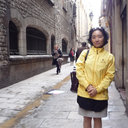[Change in skin reactivity to common allergens in allergic patients over a 30-year period. Association with aeroallergen load].
Lykilorð
Útdráttur
Five-year changes in the percentage of positive intradermal test to allergens in patients with bronchial asthma (BA) and allergic rhinitis (AR) over a period of 30 years from 1969 to 1998 were analyzed, with consideration of their association with the yearly changes in the levels of airborne pollens and molds over 30 years. Allergens used throughout the period were house dust, pollens from various plants (Japanese cedar, pine, oak, Japanese alder, Zelkova, orchard grass, ragweed, mugwort and Japanese hop) and molds (Alternaria, Cladosporium, Aspergillus, Penicillium and Candida). Overall percentages to house dust were higher in BA patients than in AR patients, but those to pollens were distinctly higher in the latter. Those to molds were higher in BA patients, except that those to Alternaria were about the same in both BA and AR patients. Therefore, the clinical expression of allergy may differ according to the type of allergen to which subjects are sensitized. Over the course of 30 years, the increase in the percentage of positive intradermal test to all of the allergens used was noted in both BA and AR patients, although this did not always reflect the aeroallergen load. This includes the two extremes to pollens from Japanese cedar and pine, either of which is the most common source of allergen in Japan. Significant increases in the percentages to Japanese cedar pollen (from 12.5% to 54.4% in BA patients, and from 35.1% to 81.5% in AR patients) appeared to be roughly correlated to marked increases in pollen count. In contrast, that to pine pollen was kept low at about 2%, because of their weak allergenicity, but abruptly increased to 5-6% in the last decade, despite the almost invariable pollen count over the last 30 years. Therefore, the increased sensitivity to aeroallergens may also be associated with other factors besides their load in the air.


